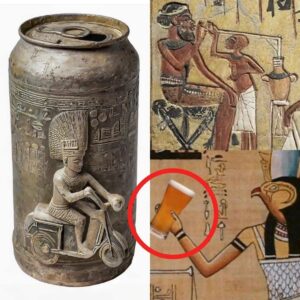
The Egyptian pyramids, those colossal ancient wonders, have always been a fascinating and mysterious subject for humanity. One of the biggest questions surrounding their construction is: Who performed the heavy and complex work of building these pyramids? For decades, it was believed that these magnificent structures were built by thousands of healthy slaves. But is this really the case? Recent research has brought to light many surprising details about the actual labor force behind these constructions.
1. Traditional image of slaves building pyramids: For many years, the popular image of pyramid construction has been closely associated with thousands of suffering slaves, forced to work under harsh conditions. Movies and literary works have contributed to cementing this image, creating a tragic and painful view of the construction process. However, modern archaeologists and historians have discovered that the truth may be much more complex.
2. New research on the labor force: Recent studies indicate that the labor force building the pyramids was not solely comprised of slaves but also included skilled workers who were adequately compensated. Archaeological findings at sites surrounding the pyramids have revealed the existence of worker villages with developed infrastructure, including housing, food supplies, and medical care. This suggests that those involved in the construction were not forced slaves but organized and well-cared-for workers.
3. Nutrition and medical care: A crucial aspect of understanding the labor force is their nutrition and medical care. Studies of skeletal remains found in worker villages show that these individuals were provided with a nutritious diet, including meat, fish, and grains. They also received medical care, with evidence of surgeries and treatment for injuries. These findings indicate that the labor force was well-attended to in terms of health and physical condition, ensuring they could perform the demanding work.
4. Importance of the labor force: Building the pyramids required a large, skilled, and well-organized workforce. The workers were not merely manual laborers but also possessed specialized skills in various fields such as construction, engineering, and management. The seamless coordination between worker groups was a key factor in completing these grand structures.
Conclusion: The traditional image of suffering slaves building the Egyptian pyramids has been challenged by modern research. In reality, the labor force building the pyramids consisted of healthy, well-organized, and well-cared-for workers. This not only changes our perception of the past but also honors the people who contributed to creating these monumental wonders of humanity. Through this, we gain greater appreciation and admiration for the intelligence, perseverance, and teamwork of the ancients in constructing these legendary edifices.






